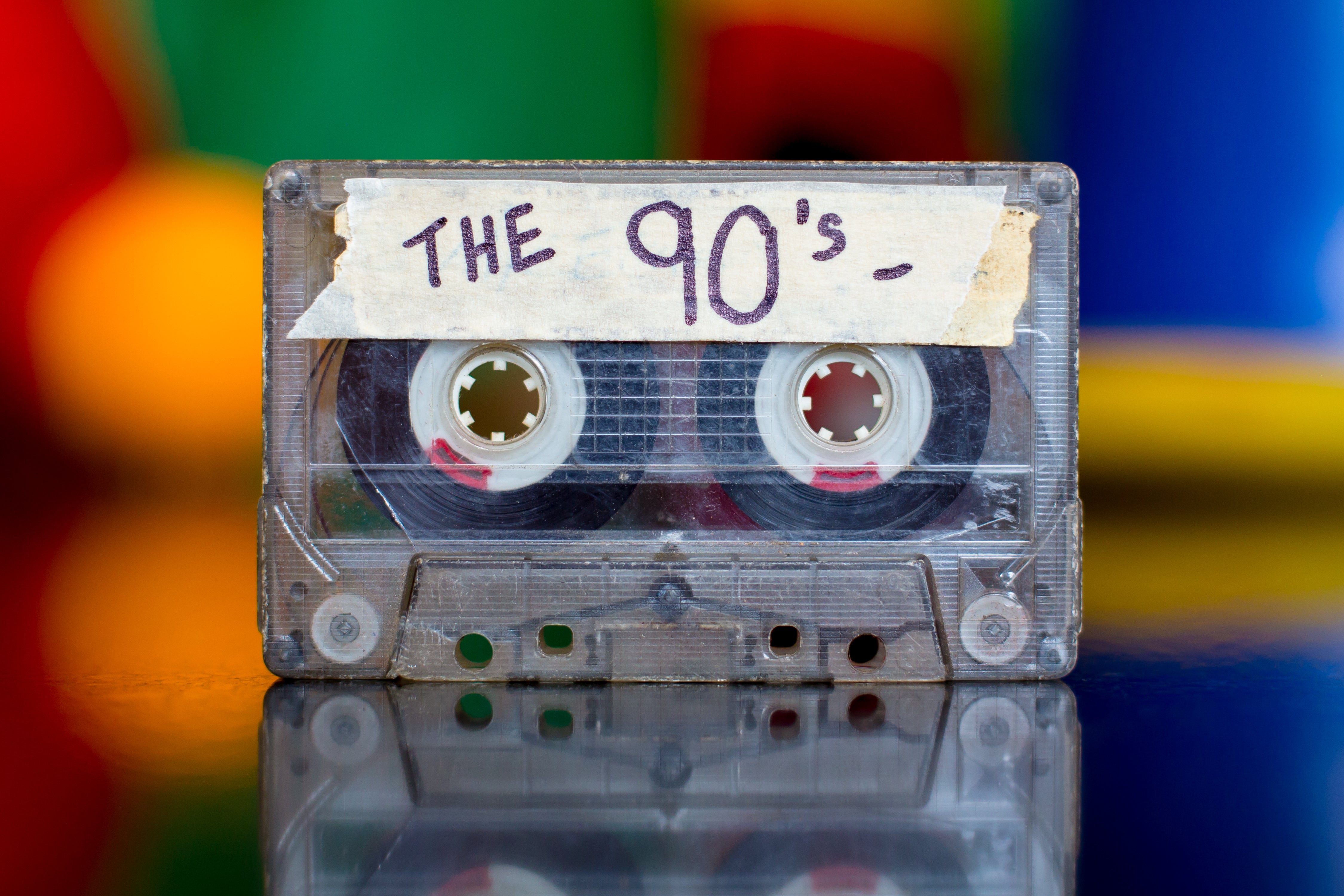Our history is being filtered by fake 90s nostalgia
I revel in the relics of my childhood, the fashion and the outrageous hairstyles, but I know deep down that there is something not quite right


Your support helps us to tell the story
From reproductive rights to climate change to Big Tech, The Independent is on the ground when the story is developing. Whether it's investigating the financials of Elon Musk's pro-Trump PAC or producing our latest documentary, 'The A Word', which shines a light on the American women fighting for reproductive rights, we know how important it is to parse out the facts from the messaging.
At such a critical moment in US history, we need reporters on the ground. Your donation allows us to keep sending journalists to speak to both sides of the story.
The Independent is trusted by Americans across the entire political spectrum. And unlike many other quality news outlets, we choose not to lock Americans out of our reporting and analysis with paywalls. We believe quality journalism should be available to everyone, paid for by those who can afford it.
Your support makes all the difference.A new trend has been taking up our scrolling time. The 1980s reigns supreme thanks to the popularity of Stranger Things, sending Kate Bush and Metallica to the top of the charts. The resurrection of their popularity is partially due to thousands of TikTok videos made by members of Gen Z, celebrating a slightly off version of the Eighties, Nineties and Noughties. When I watch them I feel like I have entered an uncanny valley of sorts. Whilst the ingredients are all there, this is not how it actually was. The internet has created its own version of nostalgia that isn’t actually real: pseudo-nostalgia.
Pseudo-nostalgia is not new. In fact it has happened before. Do you remember the Fifties revival in the Nineties, seen in things like Robson and Jerome’s cover of “Up on the Roof”? I revel in the technological relics of my childhood, the fashion and the outrageous hairstyles, however I know deep down that there is something not quite right. As a child of these decades, I have seen it all first-hand. The scrunchies, the sought-after candy-coloured original Apple PCs, the jelly sandals and Nokia Snake circling on repeat.
This world is a digital museum of our most treasured possessions set to the soundtrack of our pasts. Time has transformed the old clothes that I cringe at in photographs into costumes ready for mass consumption. I have seen bedrooms decked out like Molly Ringwald’s character’s in Pretty in Pink, complete with net curtains and chintz bedding. Then there is the reclaimed old camcorder footage of high school, overlaid with the Tears for Fears classic, “Everybody Wants To Rule the World” on loop. They are real people living real lives right now, and they have no idea they are part of someone’s nostalgic trip on TikTok.
These digital recordings are important as they will be looked back on as primary sources in the years to come, whether it is old footage given new lease of life, or current reinventions of what we perceive the era to be like now. We are in danger of filtering our own history (quite literally) – Generation Z has grown up in a time of filters and apps.
I embrace technology allowing playful experimentation; maybe these people genuinely love the past and feel a deep urge to reconnect with it. It becomes a problem when it distorts the truth or creates a fabricated image instead. Brands know that people are in love with these appealing and eye-catching time capsules and they want to capitalise on these homages to the past.
To keep up to speed with all the latest opinions and comment sign up to our free weekly Voices Dispatches newsletter by clicking here
Quicksilver has created a whole line of Stranger Things clothes based on the show’s costumes and it is being marketed as Eighties style. American Eighties style. Not British. That’s one thing that is not made clear in these TikTok videos: British Nineties fashion was nothing like American Nineties fashion. Even though there were overlaps, these are two different countries and two different cultures and these TikTok videos portray one thing as everyone’s experience. American culture seems to be the most acceptable lens to view these time periods through.
We are filtering our own history. Pseudo-nostalgic videos that appear creative and fun on the surface are in danger of being turned into another commodity for people to consume. I have enjoyed the trend for over a year now and I have seen it grow in popularity. But it should just be a guilty pleasure to scroll through in the downtime of life.
I enjoy Eighties and Nineties pseudo-nostalgia as much as anyone, but I know it’s not real. Other people may not, and that’s where the problems start. We crave the unrealistic. You only have to look at the impact of filters on how we perceive ourselves. People are buying make-up made to make their skin look like it has been photoshopped, while the plastic surgery industry profits off unrealistic portrayals of bodies. It is warping our sense of ourselves and now, even our past is going under the knife.